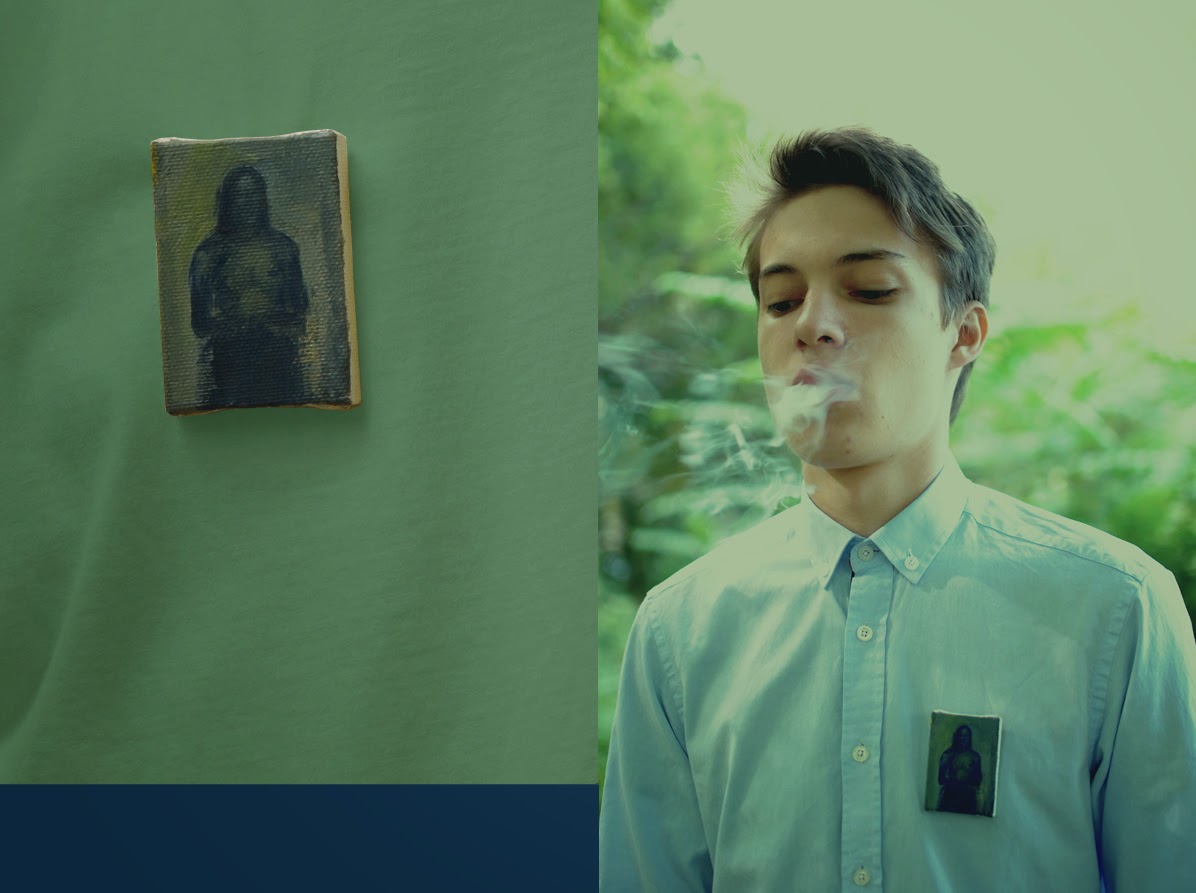by Pier Luigi Sacco in OMAGIU magazine, no. 5/ 2006 PROBLEMS, THE. II, p. 20
The art market in the early 21st century
Human kind cannot bear very much reality. -T.S. Eliot, Burnt Norton
The economics of cultural experience: activation costs.
Imagine you are entering a modern art museum for the first time and that the first work of art you run into is Marcel Duchamp's Fountain -which, by the way, means you are likely to be in Philadelphia. Yes, the famous porcelain urinal turned by 180 degrees and placed solemnly in the White Box. If you are an affectionate visitor of places like that, you will probably have an emotional reaction, even though you know that the urinal yopu are looking at is not the original one which, alas, has been lost. But if you have come there, say, because someone else urged you to see that piece because you MUST see it, (it is one of the masterpieces of the 20th century, how can you ever miss it!), you are likely to react like the famous philosopher Robert Scruton, who sees Duchamp's works as warmed-over jokes which are 'poor substitute for inspiration (Scruton, 1998). Although Scruton is not an established art critic, he is a quite established philosopher, so one could legitimately maintain that he has a reason for saying that. But the point is that your own irritated judgement , that could sound more or less the same as Scruton's and possibly concern the very same artwork, has a very different meaning and implication.
The difference lies in the kind and quantity on information that the two judgements convey. As it is well known, the instinctive reaction of the inexperienced viewer in front of a contemporary artwork is: Are you kidding? Is this ART? My five-year-old-nephew does it much better! But the point is that they are not prepared to look at that object as a work of art. The problem is not in the kind of judgement that they give, but rather in the reason why they give it. The art world is full of artists that like to think their work as something that could be enjoyed by anyone at its face value, but the truth is that is in most cases wishful thinking. One's ability to enjoy a contemporary artwork critically depends on the previous experience of contemporary artworks that they had.
Why is it so? For a very simple reason. We organize our experiences by means of cognitive strategies that rely on so called mental models, (e.g. Johnson Laird, 1938), i.e. on simplified internal representations that extrapolate the relevant features of a prototypical situation, to apply them analogically in all circumstances for which we find them relevant. In the case of an experience for which we are not prepared, we then look in the repertoire of the available mental models to find one that does the job. But if the best available model is way off the mark, we necessarily feel that the experience is disappointing, unless for fortuitous reasons we misunderstand in such a way that it looks appealing to us, albeit for the wrong reason.
The way we react to the challenge in a more positive way is, of course, expanding the domain of one's mental models by developing more articulate ones, that fit the characteristics of the experience. But doing so is costly. Not necessarily in monetary terms, but certainly in cognitive and motivational terms. On the one hand, one has to perform a certain amount of mental labour to develop the new associational schemes in the brain, and this is costly indeed the more complex the restructuring that is called for. But moreover, you have to sacrifice an option which yields a certain, positive, actual payoff for another one that yields an unknown payoff sometime in the future, one that you might not even be able to evaluate at the moment. We can call the sum of the cognitive and motivational implications of this the activation cost of a given experience, that is to say, the cost that you have to bear in order for the experience to be activated, i.e. that it talks to you in understandable terms. Of course, the more articulate, rich and complex the experience, the more likely it is that it will entail the payment of considerable activation costs, and thus that such experience will repel most potential attendance, even if the entrance is free. Thus, the reason why most highbrow experiences are poorly attended has not necessarily to do with the fact that they are felt as very expensive, and simply the law of demand applies: if price is high, demand is relativley low.
Thus, when you stand in front of Duchamp's Fountain, and you have very little awareness of the process that led to this form of art (and of further consequences that it brought about), on the one side you feel that, judged by your own standards, it is trivial and stupid and, on the other side, that all the time and energy you would have to spend in order to understand it more deeply is simply not worth it. And this also explains the hostility that generally surrounds any form of experimental art in any media or form -it is simply something that demands too much effort and is therefore dismissed, especially by those who are not so accustomed to make such efforts and therefore systematically underestimate their benefits. Of course, it may well be that even once you have got a proper mental model you still find that, say, Duchamp's Fountain is a poor piece, as Scruton does, but now you can take this position on the basis of a standard of judgement that allows you to understand what's going on at least.
This is, in a nutshell, the basic trade-off of the consumption of cultural experiences: you can pay little (in intangible terms, at least) and get little, or you can pay a lot and get probably more, especially in terms of durability. To what degree is this useful to understand the current functioning of the contemporary art market?
Informational cascades.
Imagine you've never been in a town before, it's lunch time and you're hungry. There are two restaurants on the main street, both quite empty. But in one there is at least one customer, while in the other there is none. Where do you go? Most likely, in the one with the lonely customer, and the reasoning is simple: maybe he is a local and knows more about the two restaurants than I do. But assume that the lonely customer is a stranger like you, and he simple chose by flipping a coin between the two equally empty restaurants. You have just mistaken his random choice for information, and acted consequently. But now, the next stranger looking for lunch will find an empty restaurant and the other one with two people... You have just contributed to launch what is called an informational cascade. When you do not have enough information on your own, you naturally tend to infer it from the action of others that seem to have more. But if the others are very much in the same position, the final outcome is that an option prevails over the other through the tricky combination of a few 'igniting' random events.
What does this have to do with contemporary art and its market? Quite a lot, actually. Especially if we combine this notion with that of activation costs. First of all, unlike what happened up the the 80's, today the 'canon' of contemporary art allows for every medium, from painting to installation, from photography to video, and for every language or aesthetic. So there is a lot of confusion under the sun: you can't look at an artwork and decide whether it is kosher or not there, on the spot or you can do that on your own risk. You could be bitterly contradicted by the Oracles in a very short time. In the years of minimalism, pop art or neo-expressionism it was much easier. Then you had to rely upon the judgement of the gate keepers that certified what was kosher and what not. Old story, one could object: this is what always happen. But the point is that, unlike the lucky decades when the Golden Way was clearly traced and supported by strong theorising, today the bulk of the critics theorisation is found in the mere display of his/her endorsements, plus a nuance of extra light conceptual elaboration. They choose because they choose, and they choose what they choose. On the other hand if the critics-oracles-gate-keepers want to consolidate their status, they have to make choices that are reckoned by peers as impeccable. It is therefore a sort of beauty contest game as originally defined by John Maynard Keynes, in which what really counts is not that you pick the most beautiful lady among a given number, but rather the one that most readers like you will point out as the prettiest.
If this is the name of the game, it is clear that informational cascades play a considerable role: it is enough that a few critics pick a name, for several more others to jump on the bandwagon and get a ticket for a safe guess; the safer, the longer the bandwagon. And, on the other hand, how much information does the initial pick contain? To be fair, it would contain information if the sector has a fair knowledge of the existing panorama at the international level, and the number of artists aspiring to be brought in is so huge that one can be happy if they keep a fair knowledge of the art scene of the place they live in. not incidentally, curators of big international shows like Biennials try to fill their carnet of names with study trips that cover several different nations in a few weeks, getting tips from local colleagues they trust and visiting dozens of studios per day. The informational cascade scenario is then an embarrassingly accurate description sometimes: you pick an artist from the ocean of candidate because you were struck by something -the way they present their work, the characteristics of the work itself, the functionality of the work to your exhibition idea, or a combination of all of the above- but how can you seriously think of this choice as the fruit of a pondered evaluation? You simply have no time for this.
Interestingly, the informational cascade problem mingles with the activation cost one in a tricky way. Critics and curators have, of course, a vast experience with contemporary art and very sophisticated mental models to rely upon. And yet, as any other viewer, when they visit an artist's studio they have their own arsenal of models, and there are artworks which are relatively appreciable on that basis and others which are much less so. The safest guess is that they will choose what sounds more familiar to them, i.e. what they were looking for. And consequently their judgement will be standardized not by a strong theoretical proposition but by their own choice routines, for which they will find a rationale ex post. As relatively inexperienced viewers, albeit at a different level and with a different degree of complexity, selectors will typically eschew those artworks and artists that disappoint their expectations and that require too much information to be really evaluated. In other words, those artworks and artists that look too costly on the activation side.
The sum of the activation costs and of the informational cascade effects explains why one sees always the same exclusive club of artists in almost all big international shows: they are the safe choice in all senses. How could this go wrong? If you're smart, you have to be a superstar sooner or later. Vice versa, if you aren't, you can't be really smart, and there MUST be something wrong with your work. After all, and under a considerable amount of tactical layers of formalization in selection procedures, it's as easy as that.
Who pays?
If this is the structure of the game from the point of view of the selectors, one can find its replica, even more transparent, on the spenders' side. If you are a collector, you can try to build your collection following your taste, which could be sophisticated and based on considerable previous experience. But unless you really see the endeavour as your personal effort aimed at defining an aesthetic standard, you are taking a very risky route. If you are a curator, the music is very similar. What you should do is follow the prophecies of the oracles-keepers, that will make your choices self-fulfilling, at least in the short-medium run. If you choose what they like, you will have the pleasure to see your artists exhibiting in major museums and biennials. Or else, you can take pleasure in playing the lone wolf. But if curators proudly present and collectors massively buy what they should, yet another level of validation is built into the game: the right artists are in all the right places. Someone pays (a lot) to confirm your own choices and to consolidate your reputation as a selector. Again, how could this go wrong?
In all this turmoil, artists become assets. In a sense, they are 'products' to sell on this market. This is especially apparent if one looks at a new fashionable publication format: the repertoire of kosher artists, as illustrated by the successful Cream (1998, 2000, 2003, with a 4th volume forthcoming) series of books published by Phaidon or by similar initiatives such as Art at the Turn of the Millennium (1999) or Art Now (2002), where each artist, exactly as if they were a product, is presented through a single-line payoff: the Just do it of Nike becomes, for instance, Always the bridesmaid, never the bride for Cosima von Bonin.
Paradoxically, then, the most sophisticated cultural market on earth is increasingly dominated by a rudimentary logic of low activation costs and informational cascades, with big buyers ready to confirm with their choices the verdict of a chaotic and unsystematic selection process that defines and legitimises the current elite. In other work, it is a market which is structurally set to generate bubbles, i.e. flares of success and visibility for artists whose credit and market value can drop abruptly once a new wave of selectors-oracles-gate-keepers comes in and gains power or reputation.
If bubbles bursts or not at any given turn of the wheel depends on how traumatic or smooth is the transition between the different waves of gate-keeper. A good strategy is of course preparing the way for the young lions and giving them credit, in order to have one's choices confirmed by them, rather than turned upside down. But can this go on forever? And moreover, what happens when certain choices are evaluated from a long-term perspective? It is interesting to see what kinds of answers will be given to such questions in the next twenty years. For now, the art market does not seem to care that much about this inflationary process.
We are probably heading towards interesting times.
...
Am transcris integral articolul lui Pier Luigi Sacco cu intenţia a reveni asupra lui cu unele comentarii, avînd astfel la îndemînă sursa presupuselor mele referinţe. Cred că, în pofida faptului că şi cea mai limpede şi percutantă idee poate fi astăzi combătută, textul lui Sacco trebuie citit cu (mai) multă atenţie, fără să ne excludem cumva dintre rîndurile sale, artişti, curatori sau colecţionari. Am preferat traducerea în engleză (nu mi-am dat seama dacă aparţine lui Vlad Palcu sau Bogdan Băicoianu, cei doi translatori ai numărului), cu micile sale imperfecţiuni pentru mai mulţi cititori.








